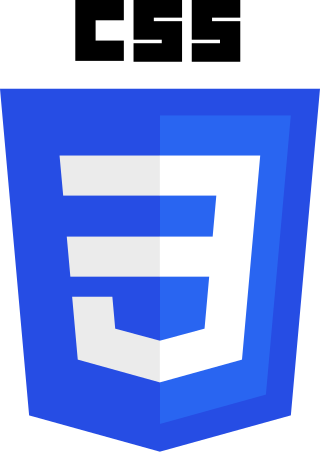Web design encompasses many different skills and disciplines in the production and maintenance of websites. The different areas of web design include web graphic design; user interface design ; authoring, including standardised code and proprietary software; user experience design ; and search engine optimization. Often many individuals will work in teams covering different aspects of the design process, although some designers will cover them all. The term "web design" is normally used to describe the design process relating to the front-end design of a website including writing markup. Web design partially overlaps web engineering in the broader scope of web development. Web designers are expected to have an awareness of usability and be up to date with web accessibility guidelines.
Gecko is a browser engine developed by Mozilla. It is used in the Firefox browser, the Thunderbird email client, and many other projects.

Tiki Wiki CMS Groupware or simply Tiki, originally known as TikiWiki, is a free and open source Wiki-based content management system and online office suite written primarily in PHP and distributed under the GNU Lesser General Public License (LGPL-2.1-only) license. In addition to enabling websites and portals on the internet and on intranets and extranets, Tiki contains a number of collaboration features allowing it to operate as a Geospatial Content Management System (GeoCMS) and Groupware web application.
Trident is a proprietary browser engine for the Microsoft Windows version of Internet Explorer, developed by Microsoft.

Progressive enhancement is a strategy in web design that puts emphasis on web content first, allowing everyone to access the basic content and functionality of a web page, while users with additional browser features or faster Internet access receive the enhanced version instead. This strategy speeds up loading and facilitates crawling by web search engines, as text on a page is loaded immediately through the HTML source code rather than having to wait for JavaScript to initiate and load the content subsequently, meaning content ready for consumption "out of the box" is served immediately, and not behind additional layers.

Microsoft Silverlight is a discontinued application framework designed for writing and running rich internet applications, similar to Adobe's runtime, Adobe Flash. While early versions of Silverlight focused on streaming media, later versions supported multimedia, graphics, and animation, and gave support to developers for CLI languages and development tools. Silverlight was one of the two application development platforms for Windows Phone, but web pages using Silverlight did not run on the Windows Phone or Windows Mobile versions of Internet Explorer, as there was no Silverlight plugin for Internet Explorer on those platforms.
A browser toolbar is a toolbar that resides within a browser's window. All major web browsers provide support to browser toolbar development as a way to extend the browser's GUI and functionality. Browser toolbars are considered to be a particular kind of browser extensions that present a toolbar. Browser toolbars are specific to each browser, which means that a toolbar working on a browser does not work on another one. All browser toolbars must be installed in the corresponding browser before they can be used and require updates when new versions are released.
MIX was a Microsoft conference held annually for Web developers and designers at which Microsoft showcased upcoming web technologies. The conference was held each spring at the Venetian Hotel in Las Vegas. Unlike many of Microsoft's technical conference, MIX has been promoted more heavily to designers by inviting popular speakers from other popular web design conferences, such as SXSW, and has sponsored a CSS design contest each year to promote the conference. Microsoft has also used this conference as an opportunity to promote new web design and development tools such as Silverlight and Microsoft Expression Studio.

The Pandora is a handheld gaming computer originally released in 2010. It is designed to take advantage of existing free and open-source software and to be a target for homebrew development. It is developed and produced by OpenPandora, which is made up of former distributors and community members of the GP32 and GP2X handhelds. Until 2013, multiple batches of slightly updated Pandora variants were produced. In 2014 the development of a redesigned and upgraded successor, called DragonBox Pyra, was started.

Cascading Style Sheets (CSS) is a style sheet language used for specifying the presentation and styling of a document written in a markup language such as HTML or XML. CSS is a cornerstone technology of the World Wide Web, alongside HTML and JavaScript.
Apache Cordova is a mobile application development framework created by Nitobi. Adobe Systems purchased Nitobi in 2011, rebranded it as PhoneGap, and later released an open-source version of the software called Apache Cordova. Apache Cordova enables software programmers to build hybrid web applications for mobile devices using CSS3, HTML5, and JavaScript, instead of relying on platform-specific APIs like those in Android, iOS, or Windows Phone. It enables the wrapping up of CSS, HTML, and JavaScript code depending on the platform of the device. It extends the features of HTML and JavaScript to work with the device. The resulting applications are hybrid, meaning that they are neither truly native mobile application nor purely Web-based. They are not native because all layout rendering is done via Web views instead of the platform's native UI framework. They are not Web apps because they are packaged as apps for distribution and have access to native device APIs. Mixing native and hybrid code snippets has been possible since version 1.9.

TACTIC is a web-based, open source workflow platform and digital asset management system supported by Southpaw Technology in Toronto, ON. Designed to optimize busy production environments with high volumes of content traffic, TACTIC applies business or workflow logic to combined database and file system management. Using elements of digital asset management, production asset management and workflow management, TACTIC tracks the creation and development of digital assets through production pipelines. TACTIC is available under both commercial and open-source licenses, and also as a hosted cloud service through Amazon Web Services Marketplace.
Modern HTML5 has feature-parity with the now-obsolete Adobe Flash. Both include features for playing audio and video within web pages. Flash was specifically built to integrate vector graphics and light games in a web page, features that HTML5 also supports.

Bootstrap is a free and open-source CSS framework directed at responsive, mobile-first front-end web development. It contains HTML, CSS and (optionally) JavaScript-based design templates for typography, forms, buttons, navigation, and other interface components.

The Chromium Embedded Framework (CEF) is an open-source software framework for embedding a Chromium web browser within another application. This enables developers to add web browsing functionality to their application, as well as the ability to use HTML, CSS, and JavaScript to create the application's user interface.
Foundation is a free responsive front-end framework, providing a responsive grid and HTML and CSS UI components, templates, and code snippets, including typography, forms, buttons, navigation and other interface elements, as well as optional functionality provided by JavaScript extensions. Foundation is an open source project, and was formerly maintained by ZURB. Since 2019, Foundation has been maintained by volunteers.

Emmabuntüs is a Linux distribution derived from Debian and designed to facilitate the restoration of computers donated to humanitarian organizations like the Emmaüs Communities.
Prince is a computer program that converts XML and HTML documents into PDF files by applying Cascading Style Sheets (CSS). Prince is a commercial product, which is free to download and use for non-commercial purposes.

The KDE Gear is a set of applications and supporting libraries that are developed by the KDE community, primarily used on Linux-based operating systems but mostly multiplatform, and released on a common release schedule.

PostCSS is a software development tool that uses JavaScript-based plugins to automate routine CSS operations. It was designed by Andrey Sitnik with the idea taking its origin in his front-end work for Evil Martians.










